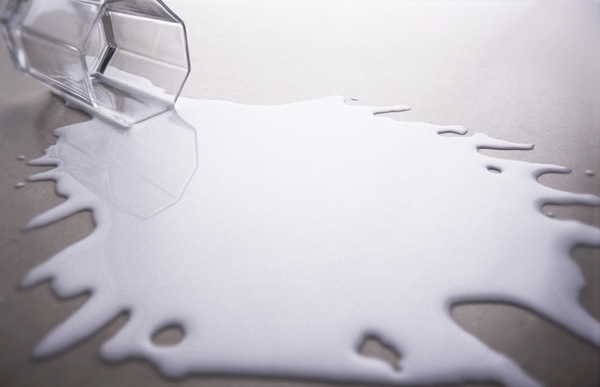
Content supplied by Rabobank

The report says the global market will “confront a wave of exportable surplus” in coming months, estimated to be 3.2 billion litres higher year-on-year (in liquid milk equivalents) for the six month period October 2017 to March 2018.
“The recent growth in global milk supply, which peaked in the last quarter of 2017 with the Oceania spring peak and a return to growth in Europe, is taking its toll on global commodity prices,” says Rabobank senior dairy analyst Michael Harvey.
Mr Harvey says “supply growth is emerging as the biggest risk for global dairy markets”, with the entire dairy complex witnessing weakness.
“Even butterfat prices, which had been defying gravity, have fallen in recent months,” he says, “however the low stocks of butter and robust demand are expected to support prices well above the five-year average.
“Meanwhile skim milk prices remain depressed, with the closure of the European intervention scheme removing the floor and allowing prices to soften further.”
While there is no immediate end in sight for weak skim milk powder prices, which have dragged the whole milk price lower, Mr Harvey says the global cheese market has “fared best” with the buoyant importing of cheese in countries like Japan and China providing support.
Mr Harvey says with pressure expected to build on global commodity prices, the first signs of weaker milk prices (in local currency) have emerged in a number of export regions.
“In New Zealand, Fonterra revised its current full-year milk price lower during December, down by NZD 0.35/kgMS to NZD 6.40/kgMS,” he says. “Rabobank’s forecast payout for the 2017/18 season has also been revised slightly lower to NZD 6.30/kgMS, down NZD 0.20/kgMS on previous forecasts and below Fonterra’s current forecast.”
While the growth in global exportable surpluses is likely to place pressure on the global dairy complex through to the middle of 2018, Mr Harvey says “exportable surpluses are not expected to completely overwhelm global markets, helped by strategies to limit supply growth from processors”.
“China will also play a key role in ensuring global markets remain ‘fairly balanced’, with their import purchasing demand, assisted by lower-than-expected milk supply and some improvements in demand, expected to remain active throughout 2018,” he says.
Mr Harvey says there is unlikely to be a smooth recalibration of the dairy complex, however Rabobank is forecasting a gradual tightening of exportable supplies through the second half of 2018.
“Much will hinge on production trends in Europe, and while supply growth is set to continue, an easing of milk prices and efforts to contain supply growth in some regions is likely to constrain growth,” he says.
Dairy policy interventions in the EU will be a key ‘watch factor’ in 2018, Mr Harvey says, as well as the risk of a US exit from NAFTA, and geopolitical tensions – all of which could create volatility in global dairy markets.
New Zealand outlook
Mr Harvey says in contrast to other key export regions, New Zealand’s milk production has been disrupted by unfavourable seasonal conditions, with the country enduring a wet winter followed by a dry spring and early summer.
“Milk production during August and September was impacted by seasonal conditions, and while milk production was more solid in October and November, the season-to-date production is up by just 1.7 per cent,” he says.
“Milk flows have now peaked and production levels during the remaining months of the season will hinge largely on weather conditions. The latest profiling from NIWA shows moisture levels well-below average and the threat of drought and weather disruption present significant risk to milk flows.”
Mr Harvey says New Zealand dairy export volumes were sluggish from August through to October and were 12 per cent back on the same period in 2016.
“This overall drop in export volumes on the previous year is largely attributable to a significant decrease in shipments to Algeria, with export volumes to this market down 80 per cent on the same three months in 2016, a reduction of 40,000 tonnes,” he says.
“The fall in New Zealand dairy exports to Algeria has been partially offset by increased volumes into China. Exports to China totalled 133,000 tonnes between August and October, a jump of 24 per cent in comparison to the same period in 2016.”
3 Comments
After a really tough winter and now an extended dry period im wondering what percentage of the 2 litre blue top off the supermarket shelf is PKE milk.....?
Lots. I followed about a dozen Swap truck &trailers over the Kaimais a week or so ago. Looking around, the rain has turned the country here greener but gee its pretty skint. There needs to be serious follow up rain.
"Large EU SMP intervention stocks have been hanging over the EU dairy market for all 2017 without
any perspective for liquidating them. On the contrary, high demand and record prices for butter have
kept SMP production going, maintaining the EU SMP oversupply situation. Increasing EU and global
milk production has led to a drop in butter prices over the past month and further increases in EU milk
production will only spur higher SMP production. Despite high EU SMP exports (663,481 MT through
October 2017 compared to 478,678 MT in the same period of 2016), it must be feared that the increase
in milk production in the coming year will only induce higher SMP production as a side product of
increasing butter production. Hence, the EU demarche to proactively take measures to restrain SMP
intervention buying in 2018, given the low EU SMP prices. The Commission’s view is that is the dairy
processors’ responsibility to manage this problem and that ultimately only the market can solve this
situation. '
https://gain.fas.usda.gov/Recent%20GAIN%20Publications/EU%20Rescinds%20…
We welcome your comments below. If you are not already registered, please register to comment
Remember we welcome robust, respectful and insightful debate. We don't welcome abusive or defamatory comments and will de-register those repeatedly making such comments. Our current comment policy is here.